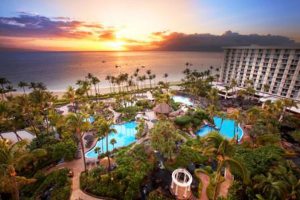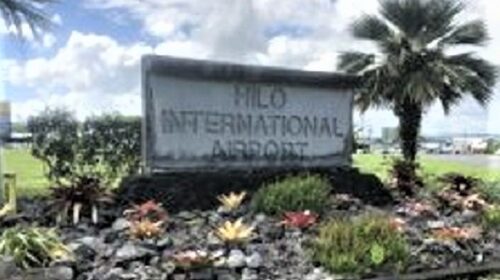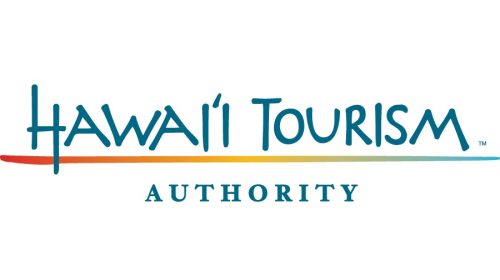Hawaii hotels break records
The Tourism Research Division of the Hawaii Tourism Authority (HTA) issued report’s findings utilizing data compiled by STR, Inc., which conducts the largest and most comprehensive survey of hotel properties in the Hawaiian islands.
On average, hotels in Hawaii reported a record $212 in revenue per available room (RevPAR) for all of 2017, an increase of 5.4 percent compared to 2016, according to the Hawaii Hotel Performance Report released today by HTA.
The average daily rate (ADR) of $264 in 2017 for hotels statewide also set a new annual record for Hawaii, an increase of 4.1 percent, or $10, compared to 2016. As seen in the accompanying chart showing the key performance statistics for Hawaii hotels from 1990 through 2017, last year marked the sixth straight year of growth for both RevPAR and ADR (Figure 1).
Hotel occupancy statewide averaged 80.0 percent in 2017, an increase of 1.0 percentage points over 2016. The highest average of annual statewide occupancy was in 2005 at 81.1 percent.
On a statewide basis, all classes of hotel properties in Hawaii performed better in 2017 compared to 2016 (Figure 2). Luxury class properties reported increases in RevPAR to $394 (+6.2%) and ADR to $525 (+4.5%), with occupancy of 75.1 percent (+1.2 percentage points).
Midscale and Economy Class hotels reported the highest growth in RevPAR for the year to $119 (+6.6%), supported by increases in average daily rate to $153 (+3.4%) and occupancy of 77.9 percent (+2.4 percentage points).
“Coming into 2017 the outlook was soft for the hotel industry, particularly in the third quarter, but the rates that hotels commanded, and the revenues generated, turned out to be far greater than anyone anticipated on a statewide level,” said Jennifer Chun, HTA director of tourism research.
“However, this growth was not distributed equally among the Hawaiian Islands. While neighbor island hotels performed well in 2017, Waikiki hotels, with the state’s largest concentration of rooms, did not enjoy the same level of success. RevPAR was flat and occupancy, even though it was the highest in the state, was still down slightly compared to 2016.”
The average growth in annual RevPAR was strongest on the neighbor islands in 2017. Maui County at $272 (+8.9%), Kauai at $200 (+8.6%), and the island of Hawaii at $185 (+11.7%) all reported strong increases in RevPAR supported by growth in both ADR and occupancy. Oahu, by comparison, averaged modest growth in RevPAR to $194 (+1.7%), which was driven by higher ADR to $233 (+2.5%), as occupancy of 83.3 percent (-0.7 percentage points) declined slightly in 2017 versus 2016.
Chun noted, “The island of Hawaii really stands out for the way it is bouncing back with healthy increases in RevPAR and occupancy. The increased air seat capacity introduced in 2017 translated into success for the hotel properties.”
Month of December 2017
Hawaii hotels statewide averaged RevPAR of $251 (+3.8%) in the month of December, the highest monthly total in 2017. ADR increased to $319 (+3.7%), while occupancy was flat year-over-year.
Chun commented, “December was an exceptional month for hotel properties on the neighbor islands, with the average daily rate for Maui County being head and shoulders above every other county, led by the remarkable performance of the Wailea resort region.” (Figure 3)
All classes of properties reported RevPAR improvements in December compared to a year ago, with lower-tier and mid-range properties posting the strongest growth. Midscale and Economy Class hotels achieved the industry’s highest growth in RevPAR to $140 (+14.8%) in December, driven by increases in both ADR to $174 (+3.8%) and occupancy of 80.8 percent (+7.8 percentage points). Upper Midscale Class hotels grew RevPAR to $143 (+6.6%) in December versus a year ago, with increases in both ADR to $179 (+4.4%) and occupancy of 79.5 percent (+1.6 percentage points).
Among Hawaii’s four island counties, hotel properties in Maui County recorded the highest RevPAR in December at $358 (+6.2%), driven by an increase in ADR to $477 (+5.6%). Occupancy of Maui County properties rose slightly to 75.1 percent (+0.4 percentage points).
Oahu hotel properties reported a marginal increase in RevPAR to $213 (+0.6%) in December, with ADR to $261 (+1.6%) also increasing modestly. Notably, although occupancy of Oahu hotels declined slightly to 81.7 percent (-0.9%), this was still the highest rate for any of the counties in December.
Kauai hotel properties earned the largest gain in RevPAR to $231 (+8.4%) in December, boosted by increases in ADR to $314 (+5.9%) and occupancy of 73.7 percent (+1.7 percentage points).
Hotel properties on the island of Hawaii saw RevPAR increase to $231 (+6.1%) in December, fueled by a rise in ADR to $307 (+2.9%) and the highest growth rate for occupancy at 75.4 percent (+2.2 percentage points) for any of the island counties.
Wailea led the state’s resort regions in RevPAR at $632 (+9.5%), ADR at $773 (+7.5%), and occupancy of 81.8 percent (+1.5 percentage points) in December.
The Lahaina-Kaanapali-Kapalua resort area reported growth in RevPAR to $280 (+8.0%) and ADR to $374 (+5.8%) in December, with occupancy also increasing to 74.9 percent (+1.5 percentage points).
The Kohala Coast resort area reported growth in RevPAR to $336 (+5.4%) in December, driven by a strong increase in ADR to $470 (+11.0%), which offset a decrease in occupancy to 71.7 percent (-3.8 percentage points).
Waikiki properties earned slightly less per room in December, with RevPAR at $208 (-0.5%). A small increase in ADR to $252 (+1.2%) was offset by a decline in occupancy of 82.6 percent (-1.3 percentage points). Despite this drop, Waikiki properties recorded the highest regional occupancy rate statewide.




